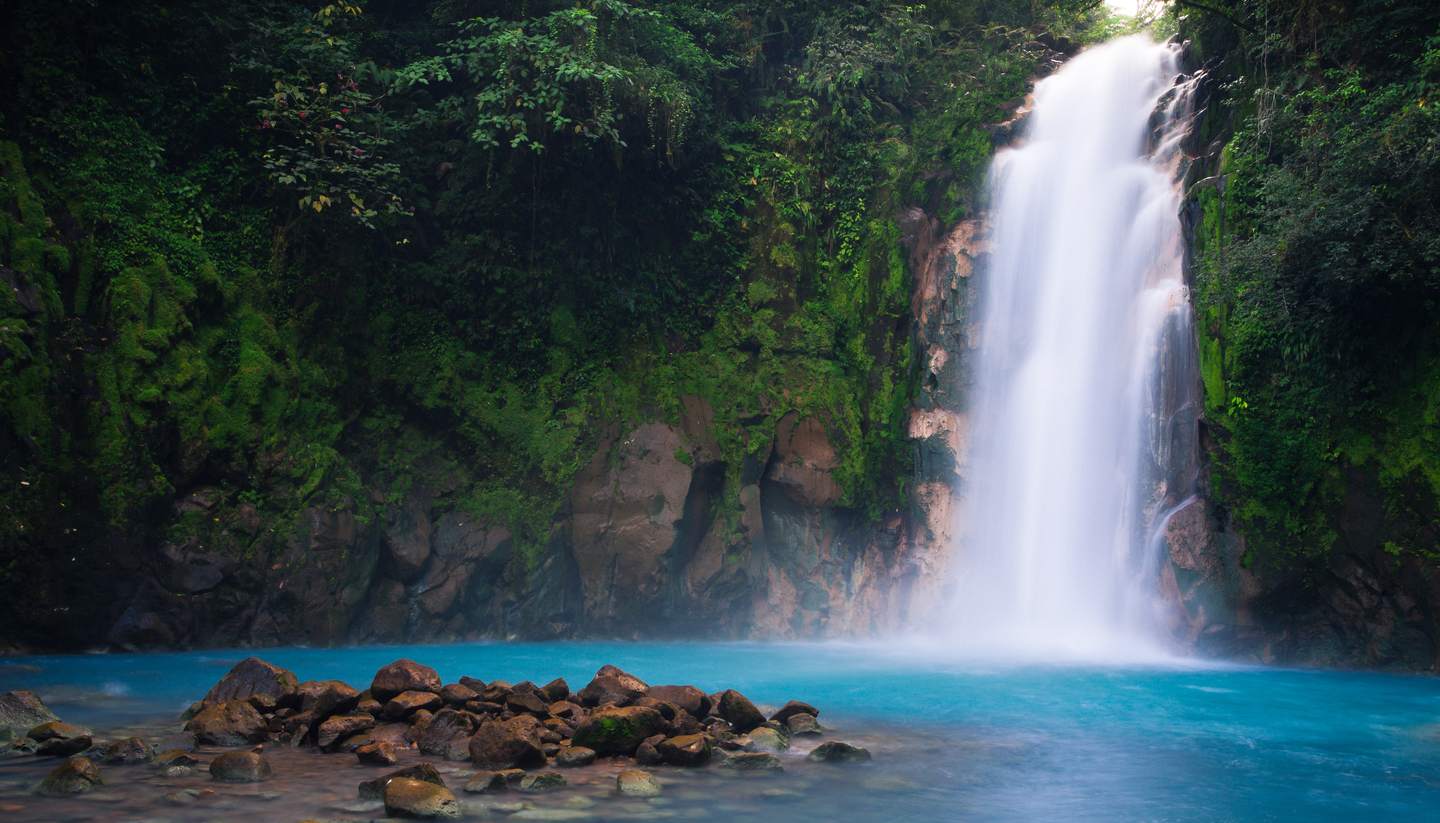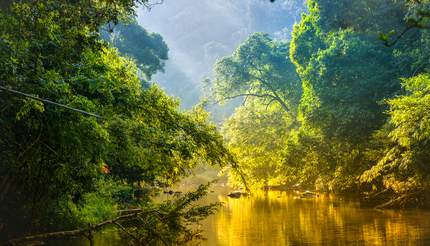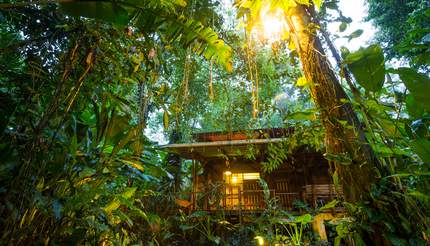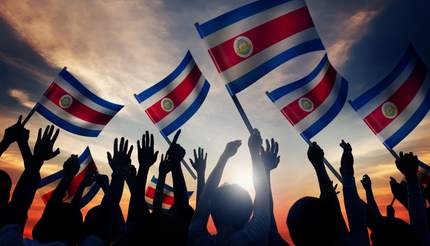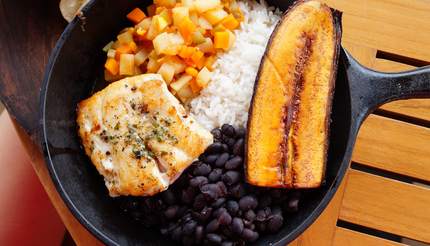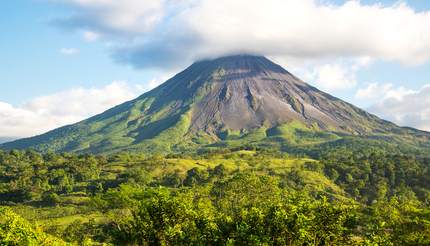Costa Rica is a vibrant chunk of the Central American isthmus and these helpful travel tips will help to prepare you for the trip of a lifetime
An oasis on the Central American isthmus, Costa Rica is one of the most tranquil travel destinations in the world. A country of innumerable charms, you will find yourself swept away by the many wonders it has to offer. Here are the top 16 useful tips to prepare you for the trip of a lifetime.
1. Costa Rica is a naturalist’s nirvana
Nestled between Panama and Nicaragua, Costa Rica is home to some of the largest, most remote and most exotic rainforest territory in Central America and offers a wonderful array of eco-lodges, yoga retreats and surf schools amidst its natural beauty. With a delicate balance of dense, lush jungle and clear, sandy beaches, Costa Rica is truly a nature lover’s paradise.
For more information on the main attractions, sights and events you can immerse yourself in throughout Costa Rica, our comprehensive Costa Rica travel guide has everything you’ll need.
2. Getting there is easy
It’s relatively easy to get to Costa Rica with an abundance of direct flights available from major capital cities across the world. The journey from New York takes approximately 5 hours. From London, British Airways flies direct from Gatwick Airport and the journey takes times 10 hours and 50 minutes. There are also indirect flights available from a number of providers. Check Skyscanner for the best and cheapest options.
3. Getting around is hard
You’d be forgiven for assuming that internal travel within Costa Rica is simple and straightforward given it is relatively small with only 51,100km² (19,730m²) to cover, just slightly larger than Switzerland. In reality, many of the roads between cities and national parks can be long and take a bit of planning, especially if you travel by bus. This means you’re likely to spend a few days in one location before moving on to the next, so take your time.
4. You can visit year round
Located just above the Equator, Costa Rica is blessed with a tropical climate year round with an average high of 27°C (81°F) and an average low of 18°C (64°F). Weather varies region to region, but the Caribbean coast tends to be wetter and the North Pacific can be dryer and hotter. A happy medium is March when there is plenty of sunshine and less humidity.
Most travellers congregate on Costa Rica’s Pacific Coast from December to March when the weather is at its best, though it also means prices are high. May to October is the rainy season on the Pacific Coast – discounts abound and this can be an ideal time for surfers looking for some swell.
Our best time to visit Costa Rica guide explains the weather pattern in each region and required clothing.
5. It’s not as cheap as you might think
There’s an assumption that just because Costa Rica is situated in Central America that you’re going to be able to get your money to go a long way for you, and while that might be true for neighbouring Nicaragua and Guatemala further north, Costa Rica is actually relatively comparable to the United States for a lot of typical goods and services, particularly during the peak season.
6. You can pay in USD or Colon
The national currency in Costa Rica is the colón ₡, with around 600 colónes returning $1USD. It is wise to carry a good supply of US dollars as they are widely accepted – national parks, restaurants and tour companies all accept dollars and give change in colónes. Most ATMs also dispense US dollars. For more information, see the Money and duty-free for Costa Rica page.
7. Costa Rica is incredibly eco-friendly
Costa Rica is one of the ‘greenest’ countries on the planet and offers an abundance of environmentally-friendly excursions. Not only is the Monteverde Cloud Forest one of the most biodiverse regions in Central America, but it’s also home to many sustainable eco-lodges that promote responsible tourism and protect Costa Rica’s natural resources.
In Monteverde, you can enjoy cascading waterfalls and misty pathways while searching for the mystical Resplendent Quetzal – a rare and endangered bird. For food lovers, a tour around one of Costa Rica’s many farms is a must. Whether you wish to learn about chocolate, coffee or strawberries, there is nothing better than a day spent among lush plantations knowing that you’re contributing to the protection of the rainforest.
8. The locals are very happy
Costa Rica is widely regarded as one of the happiest countries in the world. A global leader when it comes to environmental protection, renewable energy and sustainability, it’s no wonder that locals are proud of their country. Costa Rica’s phrase of choice, “pura vida” loosely translates to “pure life” or “simple living” and can be used to say hello, goodbye and everything in between. You can expect to be caught up in conversation with the locals when visiting Costa Rica, so understanding this mantra and embracing it is important.
9. The food is delicious but can be spicy
Costa Rican food is delicious, comforting and affordable. With an abundance of fresh fruit and vegetables, it is also fairly healthy. Start your day with a traditional breakfast of Gallo Pinto, a dish of spicy rice and beans topped with pico de gallo, chimichurri and lime. Family owned restaurants or small cafes are known as “sodas” and often offer the best variety of local cuisine. Street food is delicious, however, do remember that a red chilli sauce or salsa is generally mild while a green chilli sauce packs a fiery punch. To avoid stomach upsets you should also be wary of dairy products, as these may contain unpasteurized milk.
Must try dishes include olla de carne, sopa nega and arroz con pollo, while ice cold coconuts are popular beach-side drinks. For more information, read our Costa Rica food and drink guide for more information.
10. It’s a great place to learn to surf
The popular coastal region between Tamarindo and Malpais is dotted with laid-back surf towns and has consistent swell, ideal for anyone keen to spend some time in the salt water. A favourite among locals is Santa Teresa – a small town 8km (5 miles) north of Malpais.
Beginners are recommended to surf during the dryer season (December-May). The waves at this time are cleaner and therefore easier to catch. If you do venture out, make sure you’re aware of surfers’ etiquette and stay safe in the water.
11. Visit its many volcanoes
Costa Rica sits on the Ring of Fire where the Pacific plate collides with the continental Caribbean plate, which means the country is pockmarked by awesome volcanoes. Towering at 3,432m (11,260ft), Irazú is the tallest volcano with a long history of eruptions. At the highest point in the massif, you can see both Pacific and Caribbean coasts on a clear day. Many volcanic parks also have countless hot springs, bubbling mud pits, impressive waterfalls, as well as an array of breath-taking hiking trails.
12. Tap water is safe
Tap water in Costa Rica is generally considered safe, particularly in urbanized tourist areas. Most hotels indicate whether you’re able to drink the tap water, and if you’re visiting a landmark or attraction, your tour guide should be able to give you some advice on whether you should be drinking tap or bottled water.
If you prefer being cautious, bottled water is readily available in most hotels and shops. Drinking filtered, bottled water is recommended in more rural or undeveloped areas. Alternatively, you can bring a reusable bottle with a filter.
13. You might be able to visit without a visa
American, Australian, British, Canadian and EU nationals do not need a visa to visit Costa Rica, but other nationalities are advised to contact their embassy with regard to their status. Tourists are typically permitted 90 days, however, you may be refused entry if you don’t have proof of onward travel, so organizing this before you arrive is a good idea.
There is a departure tax included in most airfares of USD$29 when leaving the country by air. Though this fee is often included in the price of your ticket, you should check with your airline to avoid surprises. For more information about visa costs and requirements see the Costa Rica visa and passport requirements page.
14. Zika is a risk, but Dengue is the main one
There is a risk of Zika Virus transmission in Costa Rica, which currently does not have a vaccination. Vigilance is the best precautionary measure, and it is relatively easy to keep yourself safe. There have been several cases of Malaria reported in the Limón province as well as Hepatitis A (spread through consuming contaminated food & water or person-person), however, the most prevalent threat to tourists is Dengue Fever, with Costa Rica reporting the most cases of Dengue in Central America. For more information, see the Costa Rica Healthcare and vaccinations guide.
15. Costa Rica is safe
The crime level in Costa Rica is relatively low, however, exercising normal precautions should still be done. The most commonly occurring crime is petty theft, which is understandable given the high influx of tourists each year. Make sure your possessions are secure and in sight at all times.
Most tourist hubs are safe, and the only notable area that experiences consistent crime is San Jose, although the volume of this is negligible when compared to other cities. The most likely time for a crime to be committed is at night, so taking the necessary precautions during this time is advisable.
16. You should always carry a copy of your documents
By law, Costa Rican police have the authority to stop you at any time and ask for your travel documents and papers if you intend to rent a car and drive. It’s good practice for travellers and tourists visiting Costa Rica to carry a colour copy of their passport with them at all times (even when not driving), as well as evidence of your tourist stamp.
For those in vehicles, you’re required to have your original passport in your possession, as well as your driver’s license and tourist stamp. Once the police have inspected your documents, you’ll be sent on your way without a hassle.
Before you go, check out:
If you found this interesting, you might also like:
